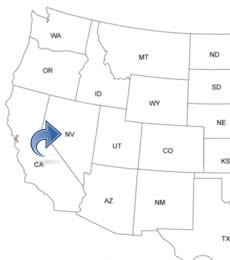NEVADA PEOPLE SEARCH!
- ✔ Contact Info
- ✔ Phone Numbers
- ✔ Criminal Records
- ✔ Income Info
- ✔ Neighbors
- ✔ People's Age
- ✔ Property Ownership
- ✔ And Much More
Las Vegas, Nevada
Las Vegas is located in the southern part and is the largest city in the U.S. State of Nevada. The Gambling Capital of the World. The Entertainment Capital of the World. Sin City. Las Vegas has many nicknames. The major attractions in Las Vegas are the casinos and the hotels. Las Vegas has about 40 million tourists a year and is one of the most visited places in the world.
To See And To Do In Las Vegas
- Gamling At The Casinos
- Las Vegas Shows
- Visit The Parks
- The Las Vegas Strip
- Fremont Street
- Bellagio's fountains
- Bellagio's Botanical Gardens
- Flamingo Garden
- MGM Grand
- The Lion Habitat At MGM Grand
- The Mirage Volcano
- The Mirage Aquarium
- The Shark Reef Aquarium At Mandalay Bay
- Vegas Indoor Skydiving
- Colorado River Kayak 1/2 Day Trip
- Vegas Horseback Tours
- Town Square Outdoor Mall
- The Forum Shops at Caesars
- Bonanza Gift Shop
- The Las Vegas Museum of Organized Crime and Law Enforcement
- The Las Vegas Natural History Museum
- Playing Golf
- Hoover Dam
History Of Las Vegas - Timeline
In 1827, Jedediah Smith, an American explorer, hunter, mountain man, trapper and a fur trader, came to Las Vegas valley. In 1829, A young scout named Rafael Rivera was the first person of European ancestry to visit the valley. In 1844, a group of scientists, scouts, and spies made camp at the Las Vegas Springs and established a fort. In 1855, a group of Mormon missionaries from Utah came to the Las Vegas Valley and built a 150-square-foot adobe fort and planted gardens. In 1857, they abandoned the fort and returned to Utah.
In 1865, Octavius Gass started irrigating fields and renamed the area Los Vegas Rancho. Octavius Gass produced wine at his ranch and Las Vegas became known as the best stop on the Mormon Trail. In 1885, farmers started to come to Las Vegas. They bought sections of land at $1.25 per acre and agriculture became a dominant industry.
In 1905, Las Vegas was founded and the railroad was completed. In 1907, the first telephone wires were installed on Fremont Street. In 1911, Las Vegas was incorporated as a city. In 1926, The city was connected to California with a road for regular automobile travel. (U.S. Route 91). Also in 1926, daily passenger air service began.
In 1929, the Las Vegas Review-Journal was published as a daily newspaper. In 1931, the Northern Club, now the La Bayou, opened and gambling was officially legalized in Las Vegas. The same year, the construction of Hoover Dam begins. Also in 1931, Fremont Street became the first paved street and received the city's first traffic light. In 1935, Hoover Dam was completed. In 1941, the El Rancho Vegas resort opened on what later became the Las Vegas Strip.
In 1946, the gangster Bugsy Siegel, poured money through banks to cover for and for the legitimacy to built The Flamingo. In 1951, 65 miles from downtown Las Vegas, the first of a series of nuclear tests occur. In 1955, about eight million tourists visited Las Vegas. In 1980, a fire at the MGM Grand Hotel and Casino killed 85 people and 785 people were injured. In 1999, Las Vegas was the most visited place by tourists in the world with 37 million tourists.

